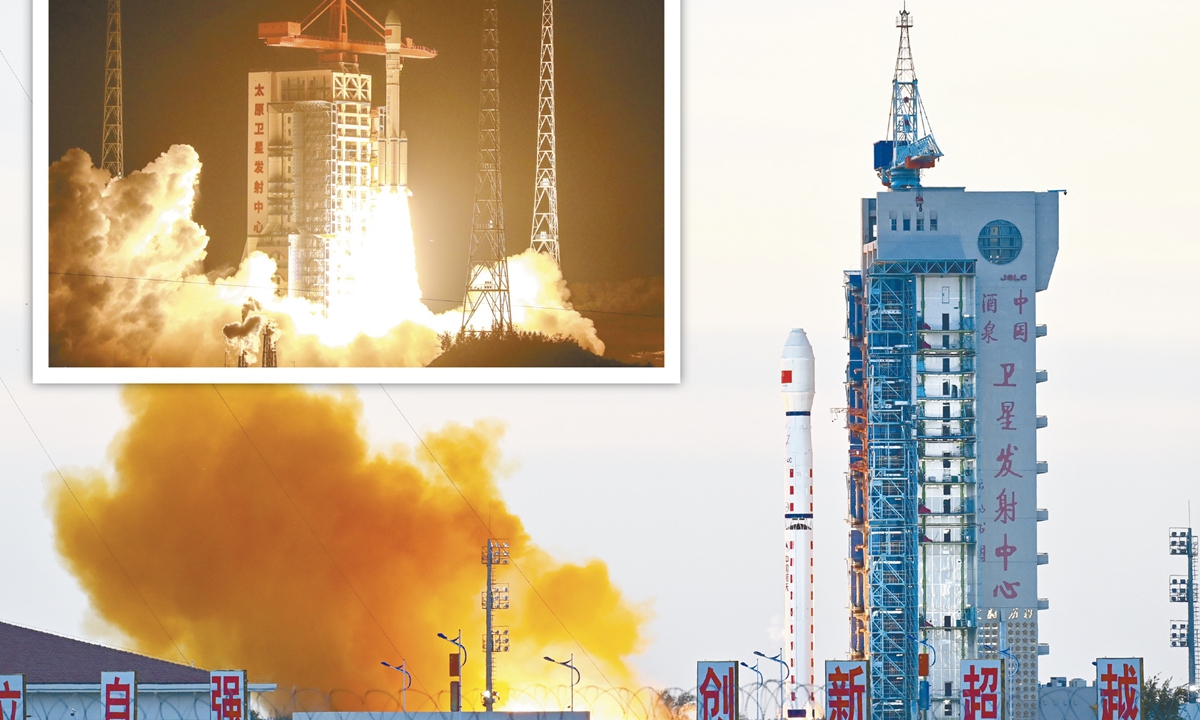
China launches the Gaofen-12 05 remote sensing satellite via a Long March-4C carrier rocket from the Jiuquan Satellite Launch Center at 7:45 am on October 16. (Inset) China successfully sends 18 communication satellites for the Qianfan network into their designated orbit via a Long March-6A rocket from the Taiyuan Satellite Launch Center on October 15 at 7:06 pm. Photos: VCG
Within just 12 hours, China successfully launched 18 communication satellites and a remote sensing satellite into their designated orbits, in two separate missions on Tuesday evening and Wednesday morning. Chinese space watchers view this achievement as a testament to the country's growing expertise in space technology and increasingly strong capabilities of space applications.
China launched the Gaofen-12 05 remote sensing satellite via a Long March-4C carrier rocket from the Jiuquan Satellite Launch Center in Northwest China's Gansu Province at 7:45 am on Wednesday.
Earlier, China successfully sent 18 communication satellites for the Qianfan network into their designated orbit via a Long March-6A rocket from the Taiyuan Satellite Launch Center in North China's Shanxi Province on Tuesday at 7:06 pm.
Both the remote sensing satellite and the Long March-4C rocket used in the Wednesday launch were developed by the Shanghai Academy of Spacecraft Technology (SAST), a Chinese space agency and subordinate of the China Aerospace Science and Technology Corporation (CASC), China's primary space contractor.
The Global Times learned from the SAST that the Gaofen-12 05 satellite will be used in a variety of fields including land surveys, urban planning, road network design, crop yield estimation and disaster relief.
Previously known as the G60 network and dubbed the "Chinese version of starlink," the Qianfan network is intended to provide high-speed, secure, and reliable broadband internet services to users around the world. According to its design plan, by the end of 2030, the network will be made up of more than 15, 000 satellites traveling in low-altitude orbits.
The establishment of the Qianfan constellation is expected to accelerate development in markets such as mobile innovation, autonomous driving, disaster prevention and reduction, and the Internet of Things, creating significant opportunities for the satellite internet industry, observers said.
The latest two successful launches were hailed by Chinese space watchers as demonstrating China's growing expertise in space technology and increasingly strong capabilities of space applications and this achievement reflects the commitment of China's aerospace workers in upholding the spirit of the "Two bombs, One satellite."




